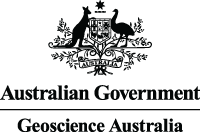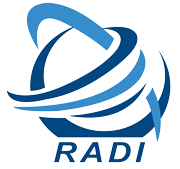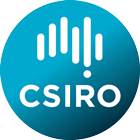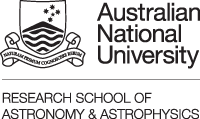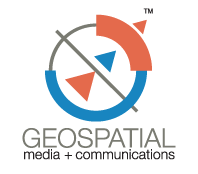FD-1: Advanced Classification Techniques for Remote Sensing
Ranga Raju Vatsavai, Surya Durbha
Abstract:
Supervised learning (classification) is the most widely used technique for thematic classification of remote sensing images. Statistical pattern recognition algorithms, decision trees, and neural networks have been widely applied for thematic classification of remote sensing imagery. However, recent advances in remote sensing technology, especially improved spectral, spatial, and temporal resolutions, put several constraints on the traditional classification algorithms. For example, increasing spectral and temporal resolution requires large number of training samples (typically 10 to 30 times the number of spectral bands), and increasing spatial resolution invalidates the fundamental assumption that the training samples are independent and identically distributed (iid). In addition, newer applications like settlement mapping require reasoning with structures (objects and relationships between them) rather than interpretation of individual pixels. These advancements in remote sensing data and demand for newer applications have prompted the development of advanced classification algorithms. Unfortunately these new algorithms have been confined mostly to the academic researchers, and the current commercial implementations are oblivious to these advances. This tutorial tries to fill this gap by bringing the recent advances to the practitioners.
Contents:
(1) Statistical Framework: We first introduce basic concepts, such as, maximum likelihood parameter estimation, Bayesian classification framework, Gaussian Mixture Models, Expectation Maximization, Covariance structure and robust estimation techniques.
(2) Semi-supervised Learning: Statistical classification algorithms, such as, MLC and MAP requires large number of training samples for accurate estimation of model (e.g., Gaussian) parameters. Recently, semi-supervised learning techniques that utilize large unlabeled training samples in conjunction with small labeled training data are becoming popular in machine learning and data mining. This popularity can be attributed to the fact that several studies have reported improved classification and prediction accuracies, and more over unlabeled training samples comes almost for free. We will introduce basic semi-supervised learning framework for the classification of remote sensing imagery.
(3) Sub-class Classification: Increased spectral resolution offers the remote sensing analyst the ability to carryout species level classification, however it also requires additional training efforts. We introduce a new sub-class classification scheme that is capable of automatically identifying finer (sub-) classes from aggregate classes, thus reduces the need for large amounts of additional training data.
(4) Spatial Classification: Increasing spatial resolution invalidates the basic assumption that the training samples are independent and identically distributed. We introduce a spatial semi-supervised learning scheme based on Markov Random Fields and also allude the participants to the basic differences with respect to the conventional per-pixel based classification schemes.
(5) Sematic Classification: Structure recognition from very high-resolution imagery requires reasoning with objects. We will introduce Latent Dirchlet Allocation (LDA) algorithm and show how it can be used in semantic clustering and classification, with applications in settlement pattern analysis and complex facility recognition.
This tutorial, which started with IGARSS 2009, was well received and attended.
Biography:
Dr. Ranga Raju Vatsavai has been conducting research in the area of spatiotemporal databases and data mining for the past 20 years. Before joining ORNL in 2006, he worked at IBM-Research (2004-06; IIT-Delhi campus), U of Minnesota (1999-2004; Twin-cities, MN), AT&T Labs (1998; Middletown, NJ), Center for Development of Advanced Computing (1995-98; C-DAC, Pune, India), and National Forest Data Management Center (1990-95; FRI Campus, Dehradun, India). He has published over fifty peer-reviewed articles and served on program committees of several international conferences including SDM, KDD, and ACMGIS, and co-chaired several workshops including PDAC (with SC), SensorKDD (with KDD), KDCloud and SSTDM (with ICDM), BigSpatial and HPDGIS (with ACM SIGSPATIAL GIS). He was also involved in developing several highly successful software systems (UMN-MapServer - a world leading open source WebGIS, *Miner - a spatiotemporal data mining workbench, EASI/PACE Parallel Fly!, parallel SAR, and first parallel softcopy photogrammetry system for IRS-1C/1D satellites). His research interests are in the large scale spatial and spatiotemporal databases and data mining, remote sensing and image understanding, computational geoinformatics, HPC and cloud computing.
Dr. Surya S. Durbha is an Assistant Professor at the Indian Institute of Tehcnology (IIT-Mumbai). Before joing IIT, he worked as an Assistant Research Professor at the Center for Advanced Vehicular Systems (CAVS) and also held an adjunct faculty position with the electrical and computer engineering department at Mississippi State University. He received his M.S. degree in remote sensing from Andhra University, India, in 1997 and Ph.D degree in computer engineering from Mississippi State University (MSU), MS, U.S.A, in 2006. At MSU, he researched and developed image information mining tools for content-based knowledge retrieval from remote sensing imagery and the retrieval of biophysical variables from multi-angle satellite data. He has published over 25 peer reviewed articles, served on program committees of several international conferences including SSKI, SSTDM, and IGARSS, and co-chaired sessions at various conferences. His current research interests are semantics, knowledge-based systems, image information mining, remote sensing, and sensor webs.


 IGARSS13
IGARSS13 @IGARSS2013
@IGARSS2013